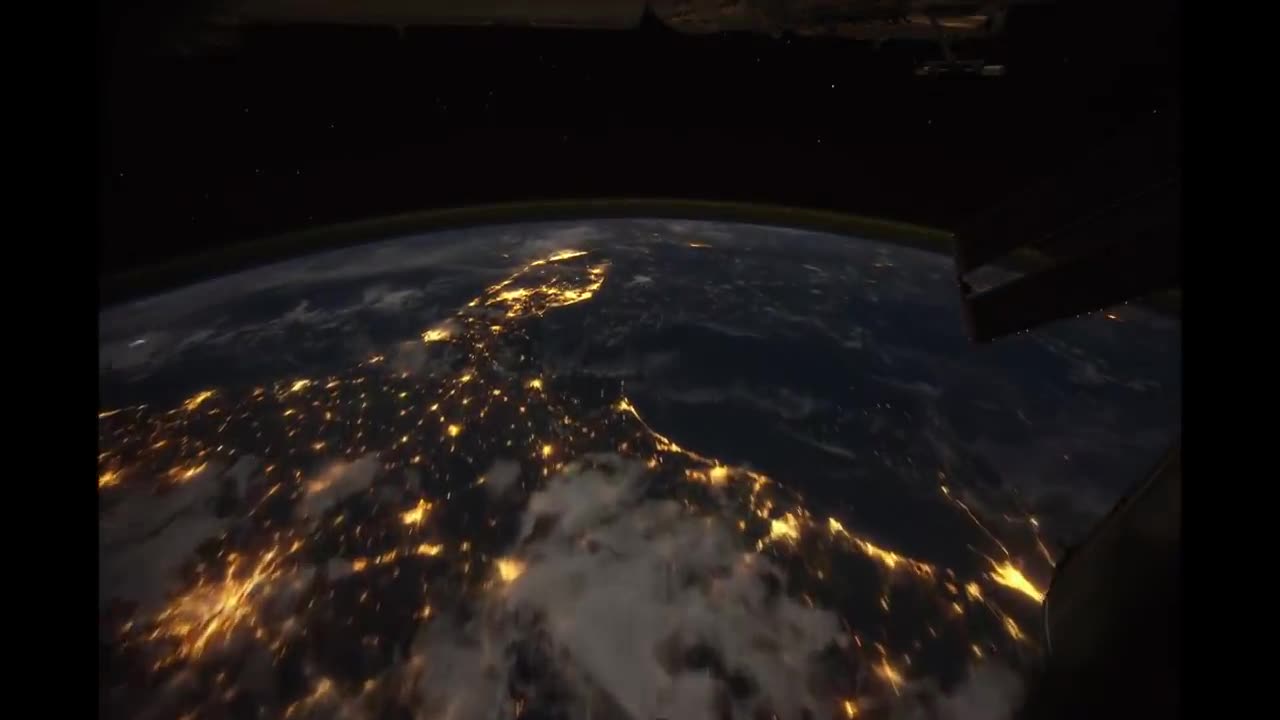Premium Only Content

All Alone in the Night - Time-lapse footage of the Earth as seen from the ISS
22,311,422 views Oct 6, 2011
FAQ: https://randomphotons.com/alone
Images: http://eol.jsc.nasa.gov/
Music: 'Freedom Fighters' by Two Steps from Hell
Editor: David Peterson
Serving Suggestion: 1080p, lights off, volume up :)
Inspired by a version of the opening sequence of this clip called 'What does it feel like to fly over planet Earth?' (Inspiration:
• What does it feel like to fly over pl... ), I tracked down the original time-lapse sequence taken on the International Space Station (ISS) via NASA, found some additional ones there, including the spectacular Aurora Australis sequences, and set it to a soundtrack that almost matches the awe and wonder I feel when I see our home from above.
To those brave men and women who fly alone in the night to take us to the stars, we salute you.
-----------------------
Sequences:
0:00 North-to-south down the western coast of North and South America.
0:48 North-to-south over Florida, the Bahamas and other Caribbean islands.
0:56 South-East Asia, approaching the Philippine Sea
1:04 Western Europe, from France through Italy, Greece, Turkey and the Middle East.
1:20 Aurora Australis, over the Indian Ocean, approaching Australia
1:36 Aurora Australis, over the Indian Ocean.
1:52 Aurora Australis, unknown location in the Southern Hemisphere.
-----------------------
Featured on NASA's Astronomy Picture of the Day!
http://apod.nasa.gov/apod/ap120305.html
Explanation from NASA: Many wonders are visible when flying over the Earth at night. A compilation of such visual spectacles was captured recently from the International Space Station (ISS) and set to rousing music. Passing below are white clouds, orange city lights, lightning flashes in thunderstorms, and dark blue seas. On the horizon is the golden haze of Earth's thin atmosphere, frequently decorated by dancing auroras as the video progresses. The green parts of auroras typically remain below the space station, but the station flies right through the red and purple auroral peaks. Solar panels of the ISS are seen around the frame edges. The ominous wave of approaching brightness at the end of each sequence is just the dawn of the sunlit half of Earth, a dawn that occurs every 90 minutes.
-
 2:39:16
2:39:16
TimcastIRL
6 hours agoDemocrat CAUGHT ON TAPE ADMITTING To Corruption, CHEATING ON WIFE Says Nick Sortor | Timcast IRL
140K33 -
 1:02:08
1:02:08
Man in America
12 hours agoTrump to BAN the COVID Vaxx?! mRNA in Your Organic Meat?! w/ Kim Bright
44.5K17 -
 57:42
57:42
Flyover Conservatives
1 day agoThe Great Gold Cover-Up: Is Fort Knox EMPTY?! - Clay Clark + Dr. Kirk Elliott | FOC Show
39.1K6 -
 1:24:40
1:24:40
Kim Iversen
9 hours agoJeffrey Sachs Just Exposed the Truth They Don’t Want You to Hear
33.4K65 -
 2:11:32
2:11:32
Glenn Greenwald
7 hours agoGlenn From Moscow: Russia Reacts to Trump; Michael Tracey Debates Ukraine War | SYSTEM UPDATE #413
109K73 -
 2:19:23
2:19:23
Slightly Offensive
7 hours ago $10.50 earnedGOV. RAMASWAMY? Vivek to import 1 BILLION INDIANS to OHIO | Nightly Offensive
27.5K17 -
 4:51:08
4:51:08
Wahzdee
10 hours agoSniper Elite Then Extraction Games—No Rage Challenge! 🎮🔥 - Tuesday Solos
64.5K3 -
 2:12:58
2:12:58
Robert Gouveia
10 hours agoSenator's Wife EXPOSED! Special Counsel ATTACKS; AP News BLOWN OUT
92.3K41 -
 55:07
55:07
LFA TV
1 day agoDefending the Indefensible | TRUMPET DAILY 2.25.25 7PM
33.7K14 -
 6:09:26
6:09:26
Barry Cunningham
16 hours agoTRUMP DAILY BRIEFING - WATCH WHITE HOUSE PRESS CONFERENCE LIVE! EXECUTIVE ORDERS AND MORE!
86K62